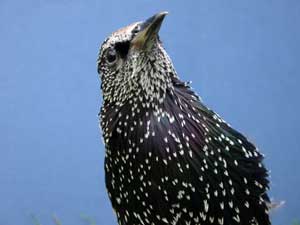Dynamics of Choice
 We aim at understanding animal choice from the joint perspectives of adaptation and mechanism. Right now we are focusing on the distinction between two possible mechanisms for choice, which can be called the 'tug-of-war' (ToW) and the 'Sequential Choice' (SCM) models. In both cases we assume that the decision-maker uses its experience to form a subjective valuation of each option in its environment, based on both the value of the option (for instance how much energy a given prey type contains) and the context (for instance what other kinds of prey are also present in that environment). However, the models differ in how the animal makes choices when it finds two or more options at the same time. According to ToW, a subject facing two options somehow evaluates and compares their subjective values and goes for the better one. This evaluationimplies a cognitive operation and may take time. In contrast, according to SCM, each option independently elicits the same process in the brain that leads to action when the option is faced on its own. The option that leads to action faster is the one taken, and the other is 'censored'. This operation does not take time because there is no evaluation, and in fact as a result of censorship the observed delays to action ahould be shorter rather than longer when more than option is present.
We aim at understanding animal choice from the joint perspectives of adaptation and mechanism. Right now we are focusing on the distinction between two possible mechanisms for choice, which can be called the 'tug-of-war' (ToW) and the 'Sequential Choice' (SCM) models. In both cases we assume that the decision-maker uses its experience to form a subjective valuation of each option in its environment, based on both the value of the option (for instance how much energy a given prey type contains) and the context (for instance what other kinds of prey are also present in that environment). However, the models differ in how the animal makes choices when it finds two or more options at the same time. According to ToW, a subject facing two options somehow evaluates and compares their subjective values and goes for the better one. This evaluationimplies a cognitive operation and may take time. In contrast, according to SCM, each option independently elicits the same process in the brain that leads to action when the option is faced on its own. The option that leads to action faster is the one taken, and the other is 'censored'. This operation does not take time because there is no evaluation, and in fact as a result of censorship the observed delays to action ahould be shorter rather than longer when more than option is present.
Our present evidence favours the SCM over ToW, but we do not know if this is valid only for some experimental protocols or a general property of avian or animal choice. This is interesting because this mechanism generates some context effects that can often lead to suboptimal choices.
There is, as always, a link to adaptation: we believe that Natural selection has tuned very precisely mechanisms that perform well in sequential encounters with potential prey, probably 'neglecting' the occasionally suboptimal consequences in (rarer) simultaneous encounters.
Current members of the group working in this area are Justine Aw, Marco Vasconcelos, Tiago Monteiro, and Alex Kacelnik.. Listed below are a few selected publications from our group, for further papers, please see the individual pages of our current group members in this area.
Relevant Publications
Martin S. Shapiro, Steven Siller, and Alex Kacelnik, (2008). Simultaneous and Sequential Choice as a Function of Reward Delay and Magnitude: Normative, Descriptive and Process-Based Models Tested in the European Starling (Sturnus vulgaris). Journal of Experimental Psychology: Animal Behavior 34: 75–93. DOI: 10.1037/0097-7403.34.1.75.
Freidin, E., Aw, J and Kacelnik, A. (2009) Sequential and simultaneous choices: Testing the diet selection and sequential Choice models. Behavioural Processes 80:218:223.doi:10.1016/j.beproc.2008.12.001
Vasconcelos, M., Monteiro, T., Aw, J., Kacelnik, A. (in press). Choice in multi-alternative environments: A trial-by-trial implementation of the Sequential Choice Model. Behavioural Processes. doi:10.1016/j.beproc.2009.11.010
Pompilio, L. and Kacelnik, A. (in press). Context-dependent utility overrides absolute memory as a determinant of choice. PNAS, doi:10.1073/pnas.0909468107
